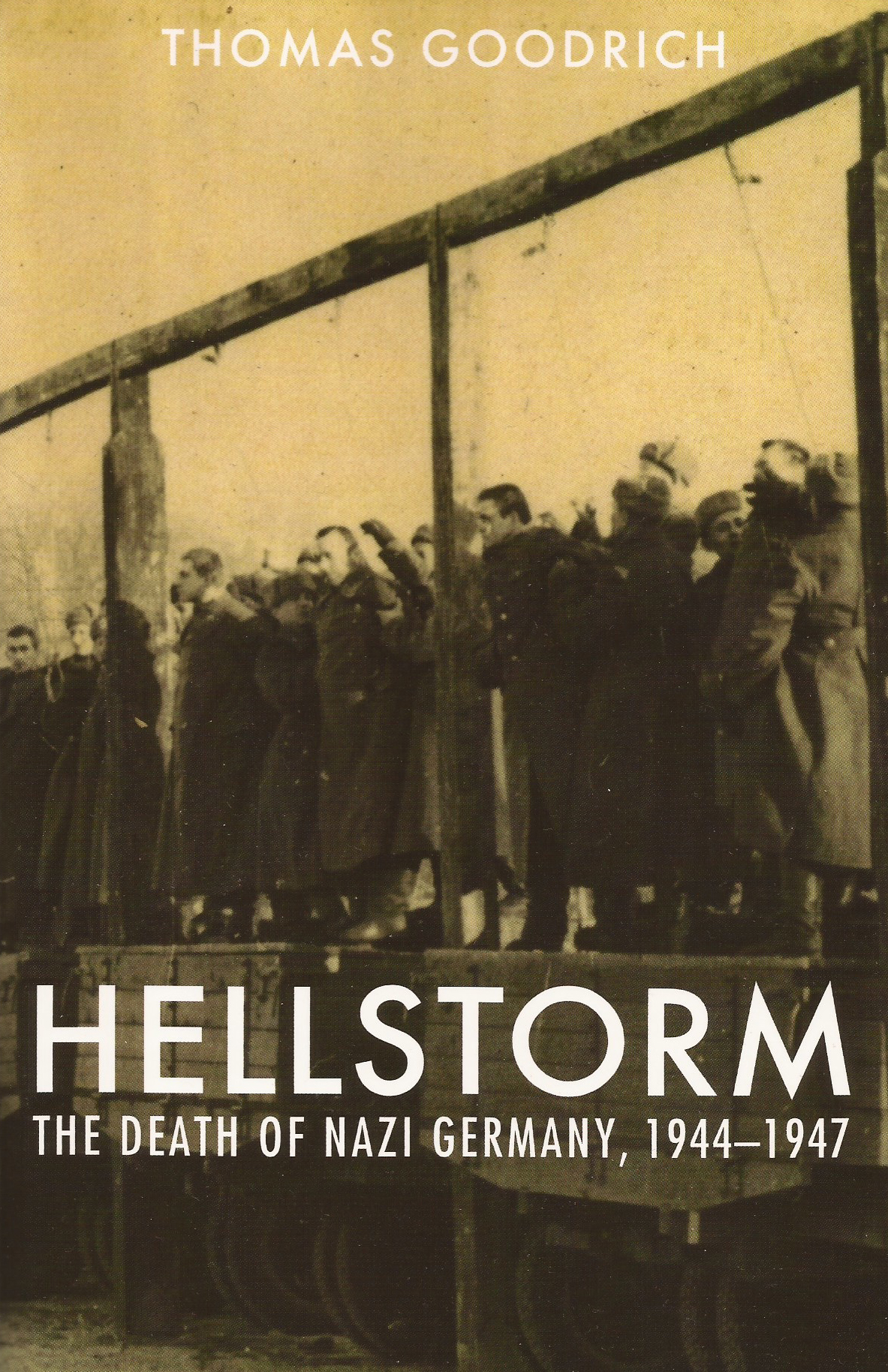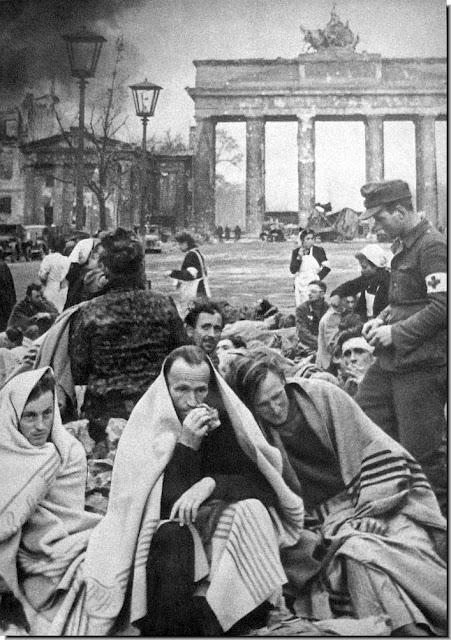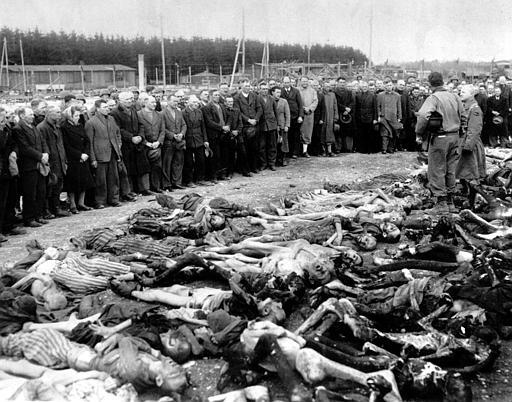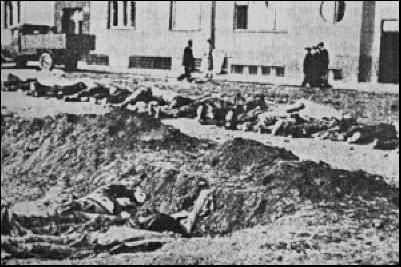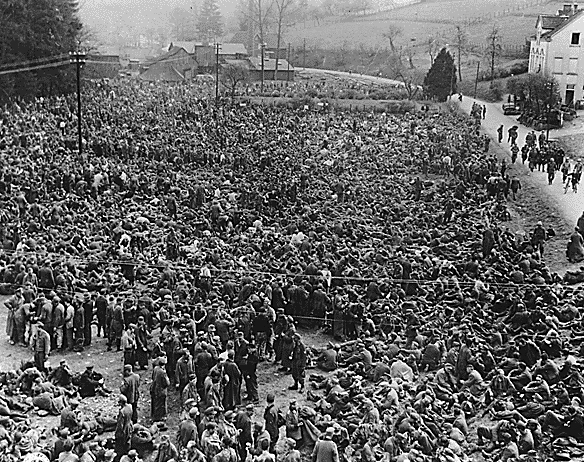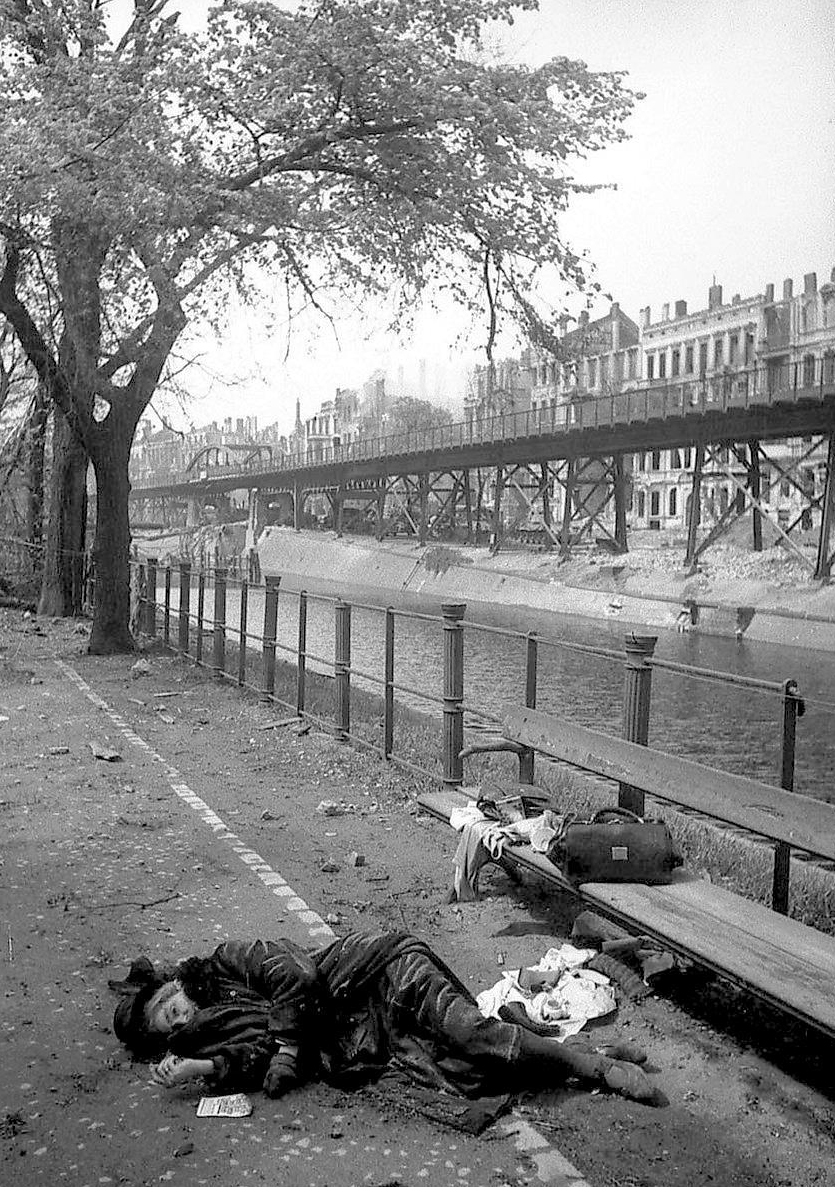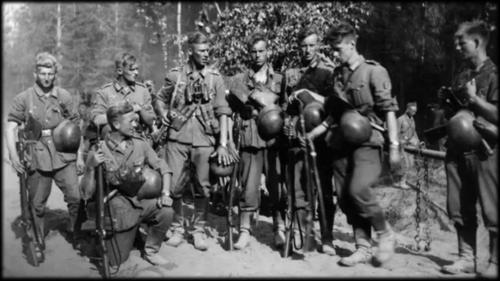In almost any war one side can be dishonestly demonized even by a truthful enumeration of its crimes, if the crimes of its adversaries are suppressed. —Irmin Vinson
Excerpted from Thomas Goodrich’s 2010 book
Hellstorm:
The Death of Nazi Germany
(1944-1947)
A War without End
In their own tally of bombing causalities, the British estimated they had killed 300,000 – 600,000 German civilians. That some sources from the Dresden raid set the toll there alone 300,000 – 400,000 dead would suggest that the British figures were absurdly—and perhaps deliberately—low. Whatever the accurate figure, the facts are that few German families survived the war intact. In many towns and villages the dead quite literally outnumbered the living.
For Germany, May 8, 1945, became known as “The Hour Zero”—the end of a nightmare and the beginning of a dark, uncertain future. Most assumed, no doubt, that awful though the coming weeks and months would be, the worst was nevertheless behind them. But these people were wrong. The worst yet lay ahead.
♣
Although forced to the shadows by public opprobrium, the Morgenthau Plan for Germany was never actually abandoned by Franklin Roosevelt. Indeed, up until his death, the American president had secretly favored the “Carthaginian” approach to the conquered Reich. When Roosevelt’s successor, Harry Truman, met at Potsdam with Stalin and the new British prime minister, Clement Attlee, in July 1945, most of the teeth in Morgenthau’s scheme remained on the table. With the signature of the Big Three, the plan went into effect.
The plundering of Germany by the Soviet Union first began when the Red Army penetrated Prussia in 1944. With war’s end, Stalin’s methodical looting in the Russian Occupation Zone became prodigious. Steel mills, grain mills, lumber mills, sugar and oil refineries, chemical plants, optical works, shoe factories, and other heavy industries were taken apart down to the last nut and bolt and sent east to the Soviet Union where they were reassembled. While the Soviet government pillaged on a massive scale, the common Red soldier was even more meticulous. Wrote one woman from Silesia:
The Russians systematically cleared out everything such as all sewing machines, pianos, grand-pianos, baths, water taps, electric plants, beds, mattresses, carpets, etc. They destroyed what they could not take away with them.
Not in a single village did one see a cow, a horse, or a pig… The Russians had taken everything away to the east, or used it up.
As this woman made clear, what was not looted was destroyed. Unlike its primitive Soviet ally, the United States had no need for German plants and factories. Nevertheless, and as Ralph Franklin Keeling points out, the Americans were far and away the “most zealous” at destroying the Reich’s ability to recover. Continues the historian:
Although America went about the business of dismantling and dynamiting German plants with more fervor than was at first exhibited in any other zone, our motive was quite different from the motives of our allies.
♣
Russia suffered no shortage of slave labor. Added to the millions of native dissidents, repatriated refugees, and Wehrmacht prisoners toiling in the gulags, were millions of German civilians snatched from the Reich. “The screaming, wailing and howling in the square will haunt me the rest of my life,” remembered one horrified female.
Mercilessly the women were herded together in rows of four. Mothers had to leave tiny children behind. I thanked God from the bottom of my heart that my boy had died in Berlin shortly after birth… The wretched victims were then set in motion to the crack of Russian whips.
“One young girl jumped from a bridge into the water, the guards shot wildly at her, and I saw her sink,” recalled Anna Schwartz. “A young man, who had heart-disease, jumped into the Vistula. He was also shot.” When the trains finally reached their destination… “the dying really began,” remembered Schwartz.
Our camp was a large place of land with a barbed wire fence, 2 meters high. Within this fence, at a distance of 2 meters, there was another small barbed wire fence, and we were not allowed to go near it.
While Anna’s camp worked on a railroad and was driven day-in, day-out “like a herd of draught animals,” and while others toiled in fields, factories, peat bogs, and lumber camps, thousands more were relegated to the mines.
(Germans shipped to the Gulags)
“Every day in the coal-pit camp even as many as 15 to 25 died,” added fellow slave, Gertrude Schultz. “At midnight the corpses were brought naked on stretchers into the forest, and put into a mass grave. “We were eternally hungry, “recalled Erich Gerhardt. “Treatment by the Russian guards was almost always very bad. We were simply walking skeletons.”
♣
Continuing the policy of their predecessors, Harry Truman and Clement Attlee allowed the spirit of Yalta and Morgenthau to dictate their course regarding post-war Germany. Because of enforced famine, it was estimated that thirty million Germans would soon succumb. Well down the road to starvation even before surrender, those Germans who survived war now struggled to survive peace.
The deadly effects of malnutrition soon became evident. Wrote one horrified observer:
They are emaciated to the bone. Their clothes hang loose on their bodies, the lower extremities are like the bones of a skeleton, their hands shake as though with palsy. The weigh of the women of average height and build has fallen way below 110 pounds. Often women of childbearing age weigh no more than 65 pounds.
“Infant mortality has reached the horrifying height of 90 percent,” added another witness to the tragedy.
When a scattering of reports like the above began filtering out to the American and British publics, many were shocked, horrified and outraged at the secret slaughter being committed in their name. Already troubled that the US State department had tried to keep an official report on conditions in Germany from public scrutiny […] Senator Homer Capehart of Indiana replied [to Senator James Eastland]:
This administration has been carrying on a deliberate policy of mass starvation without any distinction between the innocent and the helpless and the guilty alike.
Surprisingly, one of the most strident voices raised against the silent massacre was that of influential Jewish journalist, Victor Gollancz: “The plain fact is… we are starving the German people.” Although Gollancz felt the famine was not engineered, but rather a result of incompetence and indifference, others disagreed.
“On the contrary,” raged the Chicago Daily Tribune, “it is the product of foresight. It was deliberately planned at Yalta by Roosevelt, Stalin and Churchill, and the program in all its brutality was later confirmed by Truman, Attlee, and Stalin… The intent to starve the German people to death is being carried out without remorselessness unknown in the western world since the Mongol conquest.”
Because of those and other critics, Allied officials were forced to respond. “We would never condone inhuman or un-American practices upon the helpless,” assured Eisenhower as Germans died by the thousands in his death camps. When Senator Albert Hawkes of New Jersey pleaded with President Truman to head off catastrophe and allow private relief packages to enter Germany, the American leader offered various excuses, then cut the senator short:
While we have no desire to be unduly cruel to Germany, I cannot feel any great sympathy for those who caused the death of so many human beings… No one should be called upon to pay for Germany’s misfortune except Germany itself… Eventually the enemy countries will be given some attention.
In time, Germany did receive “some attention.” Late in 1945, the British allowed Red Cross shipments to enter their zone, followed by the French in theirs. Months later, even the United States grudgingly permitted supplies to cross into its sector. For thousands upon thousands of Germans, however, the food came too late.
____________________________
Educate yourself about the Holocaust perpetrated on the German people by the Allied forces that the mainstream media has covered up for nearly seventy years.
Hellstorm is still available from the publisher.
